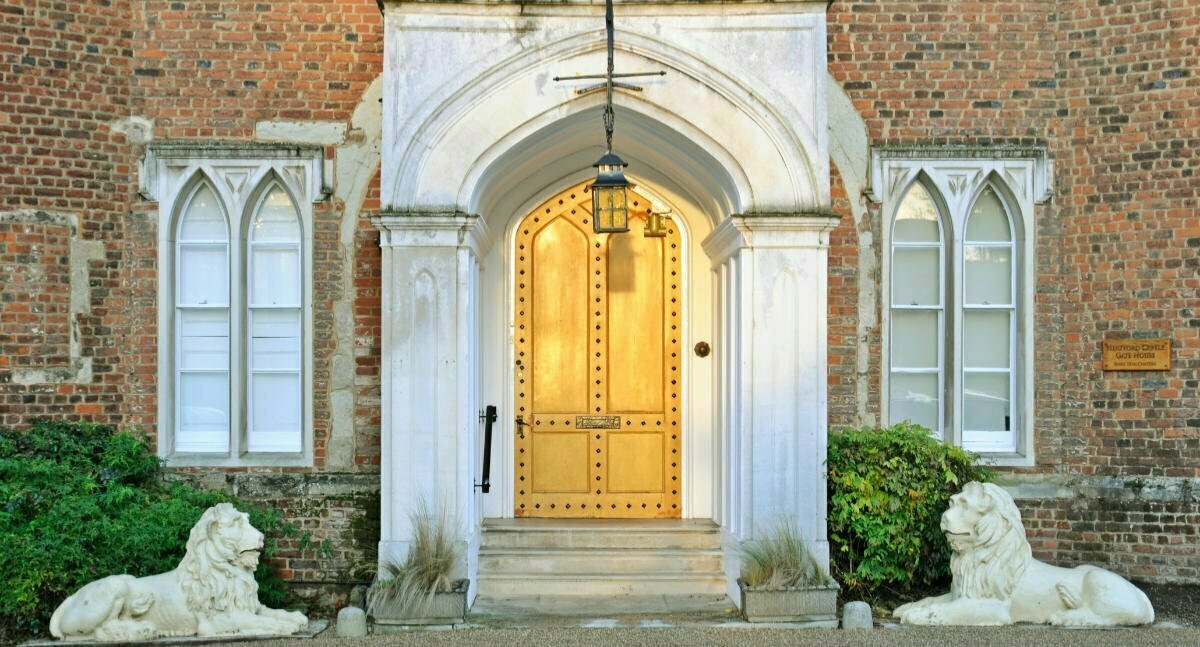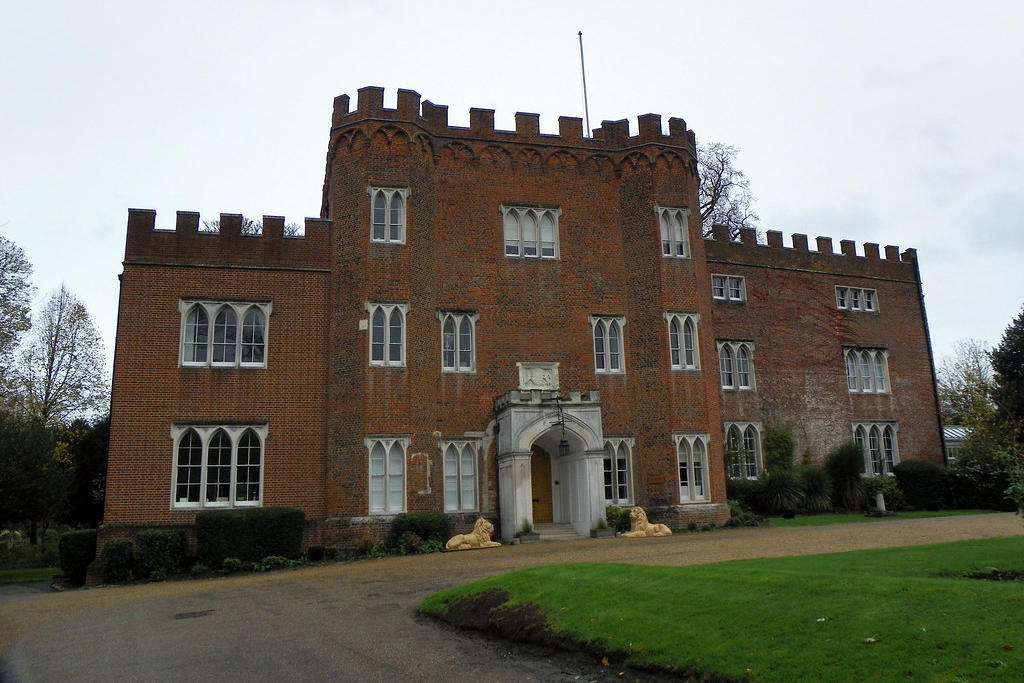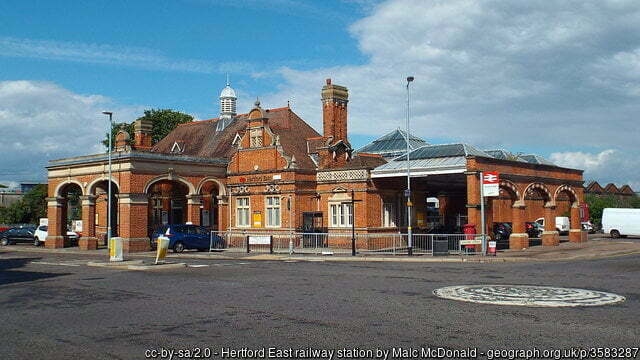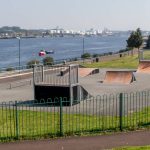
The Hertford – the town they named a shire after!
Situated inside Hertfordshire, this town was once so important that it was the county town. The fjord at Hertford has seen use since at least 913AD, with evidence of a township dating even farther back than that. The modern settlement of Hertford has some 26+ thousand inhabitants. It’s a pleasant place to live within an hour or two’s travel from London City centre. It’s not the seaside, but we want to investigate Hertford’s potential as a staycation or short stay destination, for those who like to get out of London once in a while.
Here’s the scoop on Hertford. Sit back, relax, and get the popcorn on standby as we discuss another town in another excellent travel guide.
The Early Days of Hertford
Although Hertford has its official start date as the day in 673 when the church held the First Synod here, that doesn’t mean that it is the beginning of the town. In fact, the town would have to grow large enough to have developed a parish big enough to need a church before that. This typically takes a couple of hundred years in old England.
We also know that there is evidence of Roman settlements in nearby Welwyn Garden City, where a baths was unearthed underneath the motorway. The presence of a Roman bath means there were enough Romans in the area to warrant a bathing house. It would be really interesting to find out what happened in the town in the pre-Roman years.
The town had the same name as it stands now in the Domesday Survey. Before that, the town’s name was Herutford in the Ecclesiastical History of the English People by Bede, in 731. The name of the town is based on the old English words for stag and for fjords. This was an area where the river was low enough to cross and where old English occupants could go stag hunting. Another cool point about the church in Hertford is the date of the First Synod. This is when the church decided when Easter would be.
Danish Invaders
The Danes relentlessly hounded this area. Alfred the Great defeated them in 897 but that didn’t mean the raiding parties all agreed to go home. Since Hertford lies on the River Lea, which connects to the Thames and therefore the East of England, whose shores brought Vikings.
The Danes sailed up the rivers and attacked in the 10th century, so Kind Edward the Elder ordered an earthen fort built around the fjord at the River Lea. Hertford Castle didn’t exist until after the Norman invasion of 1066, but the burh, the raised fortress, was the beginning of it. Edward added a second burh on the south side the following year, around 913. It was this side that became the castle in later years.
In the Domesday Survey conducted in 1086, Hertford was already a big town. It had 46.5 households, making it one of the biggest towns in the area. It existed with five owners, though all of them are King William. The conqueror owned:
- 18 burgesses
- 2 churches
- 3 mills with an annual value of ten pounds
- Rents and value worth 80 pounds
- 61 villagers
- 1 freedman
- 30 smallholders
- 22 slaves – that’s right, slavery was an issue even then.
- 40 cattle, 195 pigs, 193 sheep and 3 cobs.
That’s a regal sum indeed. No wonder he invaded. He saw the plump lands of the south of England and decided to help himself. 1086 was his survey to see what exactly he owned, but it didn’t take place until twenty years after the invasion. The following year, Ralph de Limesi, who was William’s nephew, established the old Hertford Priory.
The Medieval Era
After the Romans, the Saxons, the Normans, and the Danes had all come and gone or stayed and multiplied, the medieval era kicked off in Hertford. The beginning of this period came in 1174, when Henry II constructed the castle. Not himself, of course, he had his soldiers do it. Once built, it would stand untainted until the siege by the French in 1216. The Dauphin managed to capture the castle but they didn’t hold it for long.
A few short years later in 1223, the Sheriff of the shire built a gaol in the borough. So that if the French invaded again they had somewhere to put them. In 1298, the town had its first MPs. By 1296, the castle returned to the hands of the crown after spending time under the care of William De Valance. In 1304 it became a royal palace, with Margaret of France in residence. she was Edward I’s wife.
In 1332, Edward III had already surveyed it for himself. Edward II’s wife then died at the castle in 1358. The royal family got their feelings trampled and gave it away again, this time to John of Gaunt… who was Edward III’s third son. Henry IV’s wife lived here, as did Catherine of France, Henry V’s wife.
Growing Quickly
Away from the castle, the town was growing steadily. With two parishes, a castle, and a priory, it had plenty of reasons to attract new blood. The Verger’s House opened in 1450 on St Andrew Street. In 1514, the old Church of St Mary closed and in 1536 the priory dissolved.
In 1554, the large, prosperous, former royal-palace-bearing town of Hertford received its first official charter. This allowed it a market and annual fair. In 1563 the Great Plague forced the parliament to the castle. Queen Elizabeth I granted another charter in 1588 and they got their third in 1605 by James I. That brings us to the start of the 17th century, so we will take a break from history momentarily.
Fun Facts about Hertford
Looking for some trivia on the town you live in? Desperate for all the gossip for an upcoming essay? Here are all the most interesting facts we could find out about Hertford. Hopefully, there’s enough trivia here to satisfy your curiosity:
- In 1827, local poacher Peter McMullen opened a brewery to save himself the noose. He received a fanfare of clients and the brand currently has 123 breweries.
- The first official written record of the town falls to 673. This was the year the church held the First Synod here.
- The Great Plague so badly infected the people of London that the parliament had to move to make a strange move. The Parliament Square in town is so-called because parliament convened here to avoid the Great Plague.
- Samuel Stone has a statue outside Hertford Theatre. He was born in Hertford but moved to America back in 1633. He captured a Native American town named Saukiog in 1636 and renamed it Hartford. We’re not sure he deserves a statue but there’s probably a lot more to the story than that.
- The local Richard Hale school opened its doors in 1617.
- The first ever British paper mill opened in Hertford in 1488. Paper from this town travelled all over Britain and beyond.
- Hertford sits between three chalk streams. Chalk streams are endangered, with only about 200 remaining in the entire world. The Rib, the Mimram, and the Beane are all chalk streams. The water is undrinkable, of course, but it’s important for the ecosystem.
Let’s leave of on that positive note and turn back to the town’s history. What happened to Hertford during the industrial revolution? Did it change much? Let’s find out.
The Industrial Revolution in Hertford
In 1602, Samuel Stone was born in the town. He’s the one that founded the capital of Connecticut on Native American soil. The Richard Hale School opened in the All Saints churchyard. In 1621, the king commissioned a survey of the town, which John Norden carried out. The plague visited in 1625. The Earl of Salisbury was freeholder of the castle in 1628. In 1629 locals built St John’s church on the old ruins of the priory. The manor included on the priory grounds was auctioned off and went to Sir John Harrison of Balls Park.
In 1653, the town’s mayor received imprisonment for reading a royal proclamation. In 1666 a great fire at Christ’s Hospital School moved it out of London and into Hertford. A Quaker meeting house and a Friends meeting house opened in the following years. The Church of St Nicholas came down in 1675 and the Gaol finally opened on Fore Street in 1702.
The first piped water supply didn’t arrive in Hertford until 1708. A mill opened in 1721 and the first brewery in town, Young’s, opened in 1754. The River Lea opened for navigation in 1767 when locals dug out the silt banks. The Shire Hall opened in 1771 with the first edition of the local Hertfordshire Mercury published the following year. A third gaol opened on Ware Road in 1777. The Girls School of Industry opened in 1793.
Nineteenth-Century Hertford
By 1824 the town clock designed by John Briant opened. The gas works lit the streets in 1825. McMullen opened his second brewery in 1830 and the Hertford County Hospital opened three years after that. In 1841, the Cowper Testimonial School opened, with the All Saints Infant school following suit in 1845. 48 people died of a cholera outbreak in Hertford in 1849. A Livestock market opened for trading in 1851 and the town got a sewerage system in 1854.
The Railway reached the town in 1858. A Corn Exchange opened the following year. In 1863, the town built the first houses on Foley Island. Several churches opened in the 19th century with many of the gaol’s closing. The Public Library opened in 1888 and a covered market opened the next year. The post office arrived in 1890. The same year, a fire extensively destroyed the Sele Mill, it burned for three whole days.
The Modern Era
In 1897, Young’s Brewery closed. In 1900 the town finally got electricity. In 1902, the Christ’s Hospital School moved again, this time to Horsham. The Green Dragon Hotel opened in 1903 and in 1904 Christ’s Hospital’s former grounds became a girl’s school. In 1906, the Prince and Princess of Wales opened the new dorms.
The People’s Electric Theatre opened in 1910 and the castle became leased to the borough council the following year. In 1912, the Marquis of Salisbury presented the town with the Castle Gates. The Castle Cinema opened in 1914, the year before a zeppelin raid damaged buildings in North Road. A fire destroyed more buildings in 1917 after further zeppelin bombs landed. The first council houses were developed in 1921 and the Hertford North railway station opened in 1924.
In 1932, the town was still clearing slums from Bircherley Green. A toothbrush factory opened in 1935 and the old record factory closed. In 1940, a German land mine damaged houses in Ware Road. A V1 Flying Bomb landed on mill bridge in 1944. Many young men served their country from Hertford in WWI and WWII. The war memorial contains hundreds of names.
Modern Hertford is a mixture of the new and the old. After 300 years in town, the girl’s school moved recently. The Addis toothbrush factory closed and the castle was refurbished. The county cinema and many of the gaols closed, but the town received new shops and shopping centres as it moved away from the industrial and toward retail. Most modern acquisitions are supermarkets, although the town council places plenty of effort in preserving what’s left of the past.
Famous People from Hertford
At this juncture in each of our travel guides, we like to dish the dirt on who lives here. What famous names might emerge from the past to dazzle us with their reputation? Who might we meet at the corner shop to buy a sneaky vape pen? Here are some of the famous people from Hertford:
- George Ezra is from Hertford. The singer with a voice that doesn’t look like it comes from him.
- The band Deep Purple were a Hertford band.
- Rupert Grint, the little ginger boy from Harry Potter, is from here. We like Potter, not so much the writer.
- Author Frederick Forsyth, who wrote the Odessa Files, is from here.
- Samuel Stone, the man with the statue outside the theatre that founded the state capital of Connecticut and called it Hartford after stealing it from the Native Americans is from here…
Things are getting a bit more political than we hoped for. Let’s leave off and continue with the part of the article everyone comes here for, to begin with… the attractions. What is there to see and do in Hertford? Let’s find out.
The Best Attractions in Hertford
This is the part of the travel guide where we ask the locals what the best things to see and do around town are. Here’s what they had to say…
Historic Sites and Landmarks

Gatehouse to Hertford Castle © Copyright Peter O’Connor and licensed for reuse under Creative Commons SA-2.0
Hertford Castle remains one of the top attractions to see in town. Originally built just after the Norman invasion, this castle has seen numerous royal residents in its stint as a royal palace. Several of the King’s Henry either stayed here or placed their wives here, safely removed from the troubles and plagues of the big city to the south. Hertford Castle has seen extensive refurbishment which makes it a delightful place to explore. It’s massive, has great grounds, and looks brilliant at Christmas time.
Outdoor Attractions
The whole town sits on the edge of Panshanger Park. This 1000 acre park encapsulates Welwyn Garden City and is run by a trust. The park is full of interesting things to see and do. You have the observatory, the gardens and flower beds, you have the lake, the meadows, and the forest. The park was busy during social distancing measures since it has so much space that there was enough room for everyone. It’s the ideal place to sunbathe around town.
If you are looking for things to do with the kids in Hertford, we recommend Hartham Common. There are several play areas here where you can let the burn off steam.
The Bayfordbury Observatory is situated on the many acres of Panshanger Park but it gets its own special reference from us. You can go here at night to admire the stars, and even visit throughout the day to observe space. They give tours and talks, the staff are knowledgeable, and you get to look through giant telescopes. What’s not to love? The observatory runs via Hertfordshire University and is frequently occupied by undergraduate students.
Galleries and Museums
You can easily visit and enjoy the Hertford Museum while you are here. It is quaint, small, and displays ancient artefacts from points in the town’s history. The museum is inside a townhouse and they rely on funding and donations to keep running. Please visit and give freely while you are there. They also provide artwork from local artists and renowned painters alike.
Sports and Recreation
Hertford Theatre is another of the town’s top attractions. The town itself has played host to many a theatre over the years. This one is both a cinema and a theatre, allowing shows and performances of all types within the same place. Always check what’s on when you come to town. They know how to put on a good show.
Every English town of size and note has its own football team. In Hertford, that is Hertford Town FC. They play in Hertingfordbury Park but the stadium changes its name depending on the local sponsor that year. At the time of writing, that sponsor was the Lomo Bar and Grill.
Those who prefer golf as their ball sport will be delighted with the options. Go west to the Brickendon Grange Golf Club, north to Les Skeet centre, or east to the Hertfordshire Golf & Country Club for a luxury experience.
Herford has its own rugby club which we imaginatively entitled the Hertford RFC. They have their home in Ware, instead of in the town proper, but you can go and join them or go watch a match of a weekend.
Shopping and Retail
There are great shops around the town centre, some for gifts and others for groceries. There are several superstores here. You can visit the Christopher Place Shopping Centre on the east end of town, to visit the Maltings nearby. There’s also the Galleria in the north. Drive out to Foxholes farm shop and butchery too, if you are in the mood.
Other Notable Attractions in Hertford
Still on the lookout for something more palatable? There are millions of attractions to choose from in this area of the country. Here are a few more to get your blood pumping:
- Visit the Hertford Arts Hub for a day spent discussing the arts or creating
- St Leonard’s Church is an interesting site for the religious
- Ball’s Park is great for dog walkers
- The White Lion is a good place for a pint
- There’s a tourist information centre in the middle of town if you are still stuck
Now that’s over with, let’s discuss the final item on the travel itinerary: how you get there.
How to get to Hertford

We’ve informed you of everything you ought to know about the attractions and history that make Hertford special. Now it’s time we told you how to get there. We lose our way easily maybe let that be a warning.
By Road
Head north out of London on the A1 until you turn west on the A414.
By Air
The nearest airport is London Luton airport.
By Sea
Unfortunately, you are landlocked and the streams are too narrow for passage.
By Train
Hertford East train station is on the Greater Anglia line.
Got Five Minutes Free?
If you still find yourself in a position of boredom after our Hertford guide – what’s wrong with you? But seriously, you can find other travel guides on our website or you can follow us on Facebook to stay up to date with our best developments. We hope to see you there!

